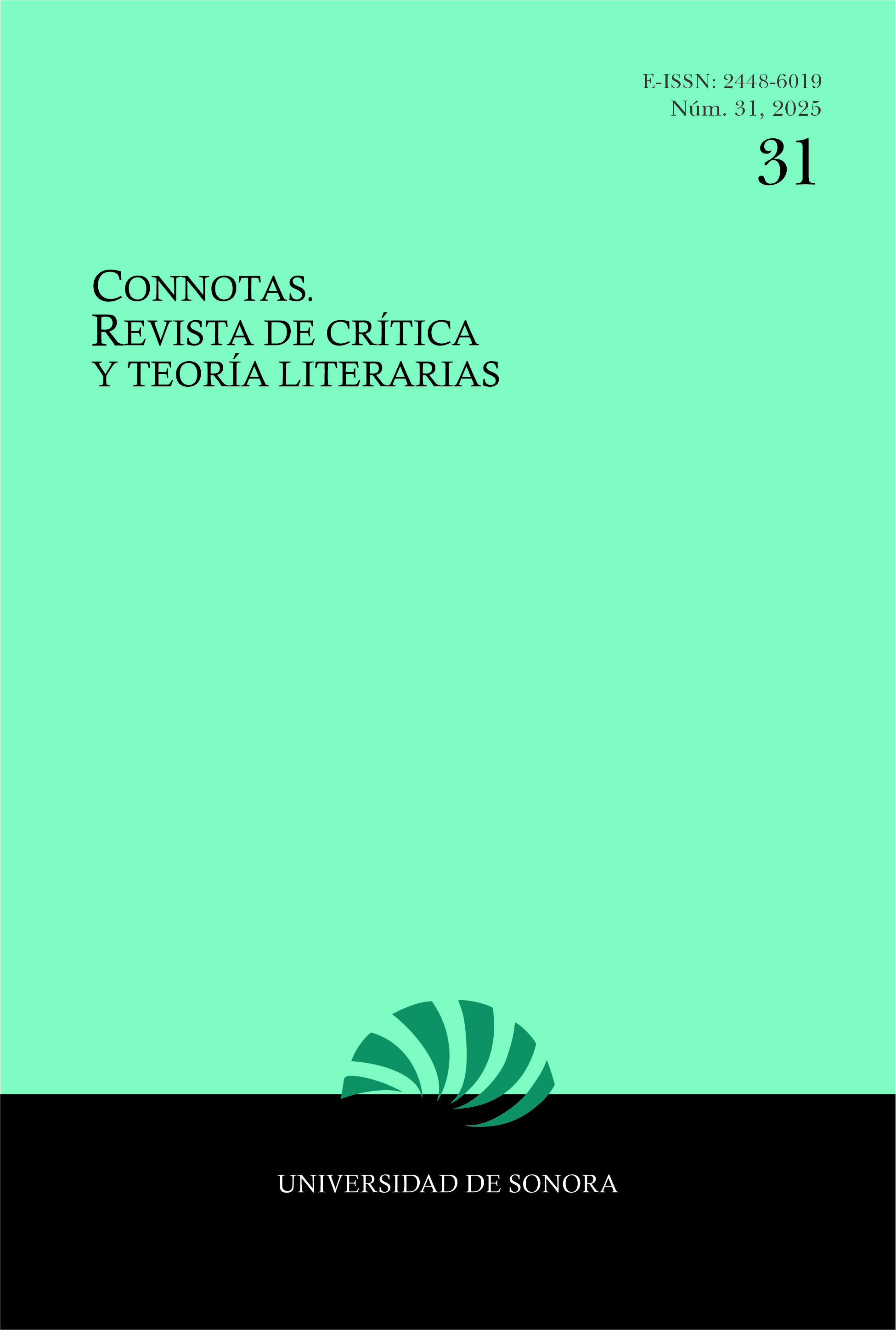Worldview and performativity in Mexican lullabies: an approach from prescriptive and philosophical analysis
DOI:
https://doi.org/10.36798/critlit.i31.555Keywords:
children’s lyrics, Mexican popular lyric, imaginary, poetic conception of the world, performanceAbstract
The worldview present in three lullabies contained in the book Lírica infantil de México (1984) by Vicente T. Mendoza is analyzed, based on Wilhelm Dilthey’s Teoría de las concepciones del mundo (1974), as well as on the concepts of performativity and performance developed by Jonathan Culler in Theory of the Lyric (2017). The study determines that the selected lullabies possess religious and poetic conceptions of the world based on dichotomies, which denote an exploitation of the adult’s imagination to induce scenarios with high ideological content in the child’s mind. It is concluded that the lyrical performativity of the arrullos has a singular transcendence, since it allows the creating fictitious realities at the same time that it affects the listener’s perception of reality. In addition, it is observed that the adequate performance of these compositions allows the fixation of their structures and basic contents to be fixed within the collective imaginary, which demonstrates their effectiveness in achieving the effect they wish to produce.
Downloads
References
“Ángel”. Diccionario de la Lengua Española, Real Academia Española, https://dle.rae.es/%C3%A1ngel.
Baehr, Rudolf. Manual de versificación española. Traducido y adaptado por Klaus Wagner y Francisco López Estrada, Gredos, 1973.
Banderas Grandela, Daniela. “Madres que arrullan: significaciones y funciones de la canción de cuna”. Epistemus: Revista de estudios en Música, Cognición y Cultura, vol. 11, no. 2, dic. 2023, 059, https://doi.org/10.24215/18530494e059. DOI: https://doi.org/10.24215/18530494e059
Barbacci, Rodolfo. Educación de la memoria musical. Melos, 2016.
Bello, Andrés. “Principios de la Ortología y Métrica de la lengua castellana y otros escritos”. Obras completas, vol. 6, La Casa de Bello, 1981.
Bruno M. “Alma de Cristo: Es una oración que todo el mundo debería rezar y meditar a menudo.” Catholic.net, https://lc.cx/Z9jmZZ.
Bustamante Petit, Armando. “Dormir para despertar: la canción de cuna como espacio de resistencia y creación de conciencia colectiva en la América negra”. A Contracorriente: Una revista de estudios latinoamericanos, vol. 21, no. 2, feb. 2024, pp. 195-216, https://acontracorriente.chass.ncsu.edu/index.php/acontracorriente/article/view/2135.
Cerdà Subirachs, Jordi. “La Leyenda de Santa Margarita de Antioquía en Cataluña”. Medioevo y literatura. Actas del V Congreso de la Asociación Hispánica de Literatura Medieval, vol. II, editado por Juan Paredes, Universidad de Granada, 1995, pp. 23-31, https://www.ahlm.es/IndicesActas/ActasPdf/Actas5.2/02.pdf.
Cerrillo Torremocha, Pedro César. “El adulto en las nanas españolas.” Revista de Folklore, no. 77, 1987, pp. 170-173. Fundación Joaquín Díaz, https://funjdiaz.net/folklore/06sumario.php?num=77.
____. “Amor y miedo en las nanas de la tradición hispánica”. Revista de Literaturas Populares, vol. 7, no. 2, jul.-dic. de 2007, pp. 319-339.
____. La memoria olvidada: estudios de poesía popular infantil. Bonilla Artigas Editores, 2017.
____. La voz de la memoria: estudios sobre el Cancionero Popular Infantil. Universidad de Castilla-La Mancha, 2005.
Cillán Cillán, Francisco. “El coco y el miedo en el niño.” Revista de Folklore, tomo 28a, no. 326, 2008, pp. 51-59, https://www.cervantesvirtual.com/nd/ark:/59851/bmctm927.
Corbeil, Mariève, et al. “Singing Delays the Onset of Infant Distress”. Infancy, vol. 21, no. 3, abr. 2016, pp. 373-391, https://doi.org/10.1111/infa.12114. DOI: https://doi.org/10.1111/infa.12114
Cuéllar Escamilla, Donají. “El sistema del don en la tradición hispano-mexicana de las nanas: ruegos, obsequios y bendiciones”. Revista de Folklore, no. 474, ago. 2021, pp. 26-36, https://funjdiaz.net/folklore/07ficha.php?ID=4745&NUM=474.
Culler, Jonathan. Theory of the Lyric. Harvard UP, 2017. DOI: https://doi.org/10.18261/issn.2464-4137-2017-02-02
DCasper, Anthony J., y William P. Fifer. “Of Human Bonding: Newborns Prefer Their Mothers' Voices”. Science, vol. 208, jun. 1980, pp. 1174-1176, https://doi.org/10.1126/science.7375928 DOI: https://doi.org/10.1126/science.7375928
Del Campo Tejedor, Alberto, y Fernando C. Ruiz Morales. “Aún viene el Coco. Origen, pervivencia y transformación de un clásico del miedo infantil.” Athenea Digital, vol. 18, no. 2, jul. 2018, https://doi.org/10.5565/rev/athenea.2040. DOI: https://doi.org/10.5565/rev/athenea.2040
Domínguez Caparrós, José. Métrica española. Universidad Nacional de Educación a Distancia, 2014.
Fernández Poncela, Anna M. “Canción de cuna: arrullo o desvelo”. Anales de Antropología, vol. 39, no. 2, oct. 2009, https://www.revistas.unam.mx/index.php/antropologia/article/view/9971.
____. “Género y canción infantil”. Política y Cultura, no. 26, 2006, pp. 35-68, Redalyc, https://www.redalyc.org/articulo.oa?id=26702603.
Frenk, Margit. “Rimas para juegos infantiles en el antiguo cancionero popular”. Ocnos, vol. 9, 2013, pp. 7-20, https://doi.org/10.18239/ocnos_2013.09.01. DOI: https://doi.org/10.18239/ocnos_2013.09.01
García Lorca, Federico. “Canciones de cuna españolas”. Imaginación, inspiración, evasión, editado por Miguel García-Posada, Gredos, 2023, pp. 25-46.
Jacobs, Jarrod. “Los cuatro sueños de José”. Iglesia de Cristo La Vista, 26 sept. 2024, https://www.lavistachurchofchrist.org/es/cms/josephs-four-dreams/.
Langshaw Austin, John. How to do things with words. Oxford UP, 1962.
Kasapoğlu Akyol, Pinar. “From Tradition to the Future Universal Language of Love: Lullabies.” Desarrollos recientes en las artes. Editado por Zbigniew Bialas et al., E-BWN, 2017, pp. 159-168.
Masera, Mariana. “Las nanas: ¿una canción femenina?”. Disparidades. Revista De Antropología, vol. 49, n. 1, jun. 1994, pp. 199-219, https://doi.org/10.3989/rdtp.1994.v49.i1.284. DOI: https://doi.org/10.3989/rdtp.1994.v49.i1.284
Mehr, Samuel A., et al. “Form and Function in Human Song”. Current Biology, vol. 28, feb. 2018, pp. 356-368. Cell Press, https://doi.org/10.1016/j.cub.2017.12.042. DOI: https://doi.org/10.1016/j.cub.2017.12.042
Mendoza, Vicente T. Lírica infantil de México. Fondo de Cultura Económica, 1984.
Nogueira, Carlos. “Lullabies from the Iberian Peninsula: yesterday and today”. La voz de la memoria. Nuevas aproximaciones al estudio de la literatura popular de tradición oral. Editado por César Sánchez Ortiz y Aránzazu Sanz Tejeda, Ediciones de la Universidad de Castilla-La Mancha, 2019, pp. 245-251.
Santana, Ana. “El arrorró, una antigua canción de cuna bereber que llegó a España y América”. La Vanguardia, 7 abr. 2015, https://www.lavanguardia.com/local/canarias/20150407/54429713105/el-arrorro-una-antigua-cancion-de-cuna-bereber-que-llego-a-espana-y-america.html.
Taub, Emmanuel. “Los ángeles y el poder celestial: el racionalismo de Maimónides versus el misticismo y la duplicidad del trono”. Universitas Philosophica, vol. 35, no. 70, mar. 2018, pp. 103-129, https://doi.org/10.11144/Javeriana.uph35-70.apcm. DOI: https://doi.org/10.11144/Javeriana.uph35-70.apcm
Tausiet, María. “Vivir, dormir, morir: soñar acaso”. Revista de Libros, 21 ene. 2019, https://www.revistadelibros.com/sasha-handley-sleep-in-early-modern-england-maria-tausiet/.
Tejero Robledo, Eduardo. “La canción de cuna y su función de catarsis en la mujer”. Didáctica (Lengua y Literatura), vol. 14, 2002, pp. 211-232, https://revistas.ucm.es/index.php/DIDA/article/view/DIDA0202110211A.
Wilhelm, Dilthey. Teoría de las concepciones del mundo. Traducido por Julián Marías, Ediciones de la Revista de Occidente, 1974.
Downloads
Published
How to Cite
Issue
Section
License
The authors always maintain the moral and patrimonial rights of their work. They only grant the non-exclusive license of use to Connotas for their first publication. Therefore, the authors may make other independent and additional contractual agreements for the publication of their article, review or other text originally published in Connotas or with modifications (including the title) as long as they clearly indicate that the paper was first published in Connotas. Revista de crítica y teoría literarias. Connotas undertakes not to make commercial use of the texts it receives or publishes.
See also "Copyright and Licences".





